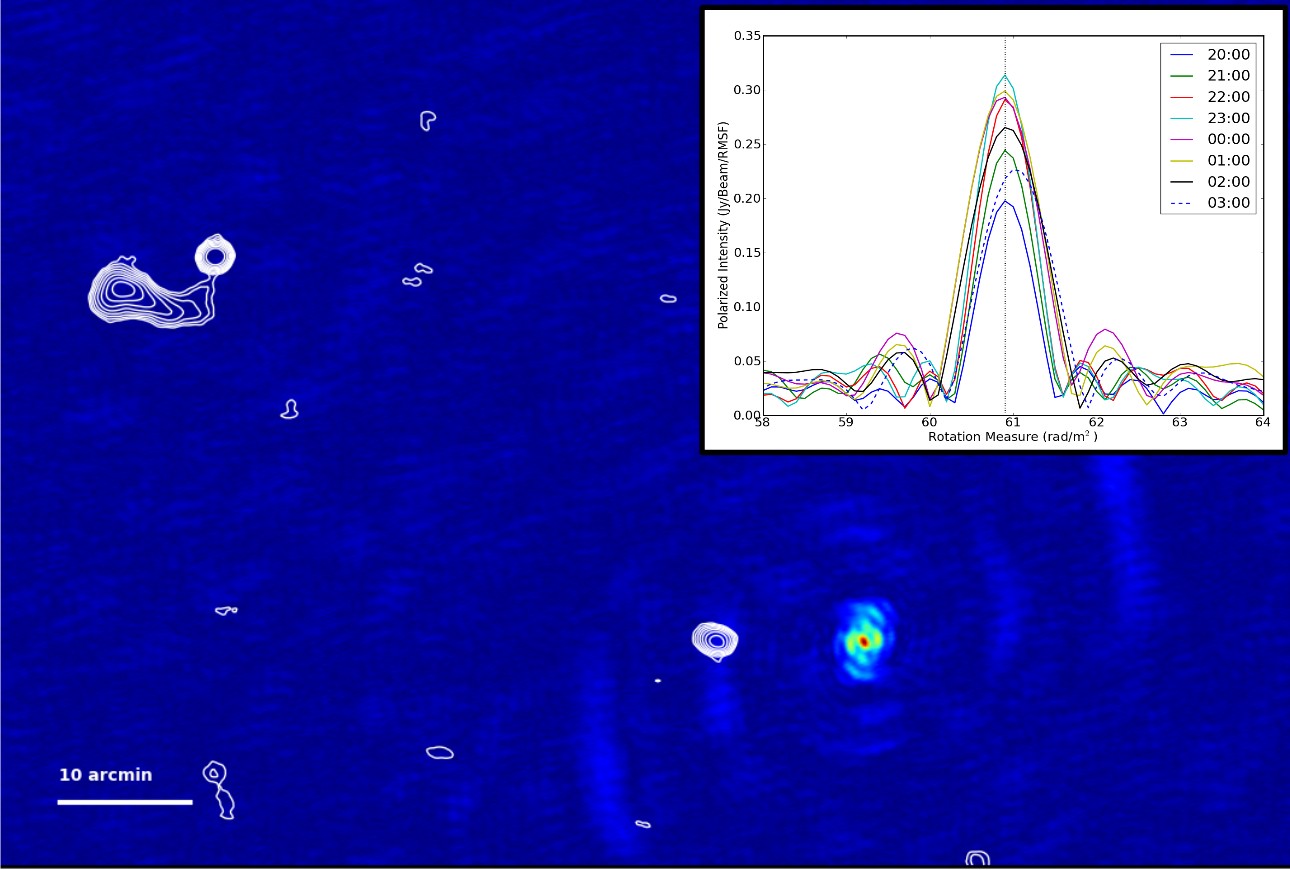Daily Image
16-03-2011First probe of ionospheric RM variability with LOFAR
| Submitter: | Michael Bell |
| Description: | During the last Polarization Busy Week in October, a field centered on the polarized millisecond pulsar PSR J0218+4232 was observed overnight with LOFAR in part to measure ionospheric fluctuations. This was done by observing a source with a known rotation measure (RM), and looking for changes in RM over time. Since the RM is a function of the electron density in the medium through which the radio waves propagate, this measures the change in the ionospheric electron content. The pulsar J0218, the first polarized source imaged by LOFAR, is known to have an RM of -61 rad/m^2. Thanks to the hard work of the busy week participants we produced excellent images of the pulsar in nearly 800 frequency channels over 50 MHz of the LOFAR HBA frequency regime. The image of linear polarized intensity, shown in color scale, has been created using the technique known as RM synthesis in which polarization images from many frequency channels are processed together to make images of polarized intensity at different RMs. This image is at RM=61 rad/m^2 where the pulsar intensity is strongest (the sign is wrong because LOFAR and the imaging software use different definitions for the polarization axes). The pulsar has a specific intensity of 0.37 Jy/Beam/RMSF. In this “dirty” image, and with no polarization calibration, the pulsar is detected at a level ~25 times the noise. The contours are of total intensity at ~138 MHz (bottom contour: 0.25 Jy/Beam, peak: 5 Jy/Beam, steps of sqrt(2)). The source in the upper left is 3C66. The inset plot shows the polarized intensity as a function of RM for the pulsar over time. Each curve is made using 1 hour blocks of the observation. We find that the RM remains stable indicating that there were no detectable large scale fluctuations in the ionosphere throughout the night. The variation in polarized intensity is due to the elevation dependence of the telescope sensitivity. With more sensitive observations we plan to make images over smaller time slices in order to detect short timescale fluctuations. |
| Copyright: | Michael Bell |
| Tweet |  |
